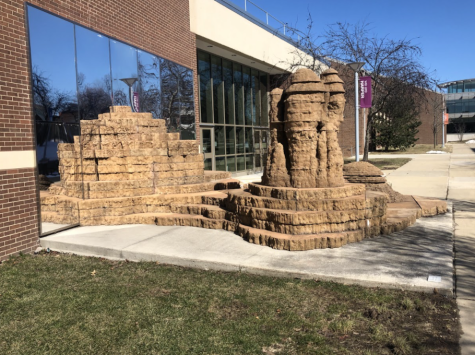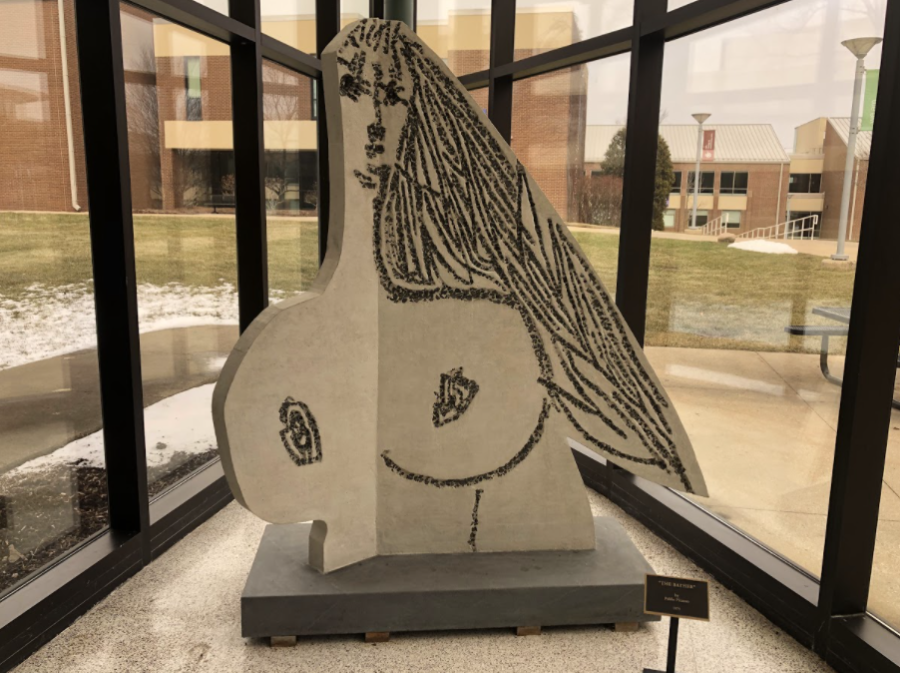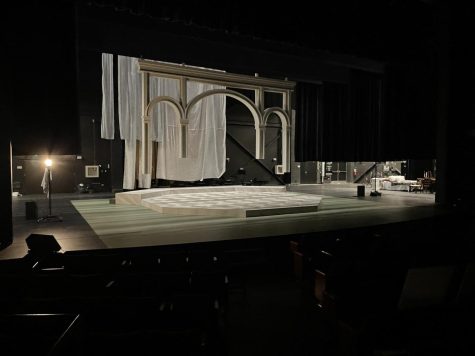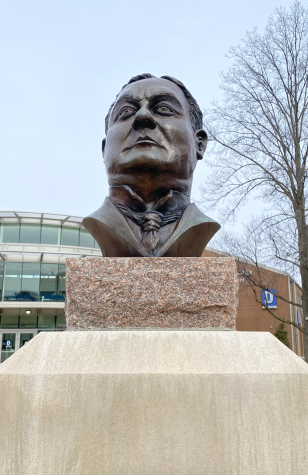Curious: How did Harper acquire such a robust art collection?
Harper College has a detailed art collection with pieces from well-known artists around the globe from Pablo Picasso to Gerard Singer. Many of these pieces were obtained through art shows, donations and purchases that started at Harper in 1968 and 1969.
“The concept for the Harper College Art Collection was to exhibit artwork that beautified the grounds and hallways,” said Harper art curator Margaret Buchen. “The Educational Foundation of the College also wanted to establish a collection that was educational for students, community and staff.”
Designed by Pablo Picasso himself a few months prior to his death in 1973, “The Bathers” is a sculpture that now finds its home on the first floor of Building L. This piece was originally just a sketch that Picasso never intended to become a sculpture. However, this particular piece was actually constructed by Carl Nesjar, a Norwegian sculptor who worked closely with Picasso on sculptures.
“The piece was controversial at first here at Harper, because of the small head in relation to the body,” Buchen explained. “It’s a good piece, and there’s a long story behind it.”
“The Bathers” is the most expensive work of art Harper owns and was donated in 1994 from William Ylvisaker of the Gould Corporation. The piece is valued at around $400,000 and is made up of concrete, granite aggregate and a marble base.

Another composition that you can find on campus is the “Permutant-Modular Sculpture” located outside of building E. This piece catches your eye immediately due to the artist, Gerard Singer, using his skill to create a sculpture that looks equal parts naturalistic and man-made.
According to Harper’s website, “Singer has said he would like his artworks to ‘soften’ the transition between nature and architecture.” “Permutant” was displayed at an art show at Navy Pier and donated to the school in 1989 by Singer himself.
Harper has an expansive collection of art donated to and purchased for the school, one that continues to thrive and grow with each passing year. If you’d like to learn more about the art collection, click here.







